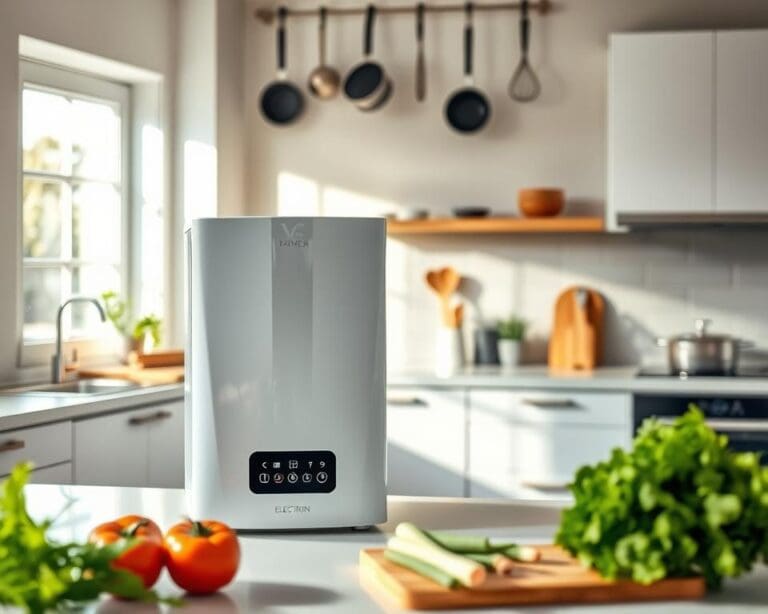Establishing a daily routine that sparks joy can be a game-changer for your overall well-being. A joyful rhythm is more than just a schedule; it’s about creating a harmony between your daily activities and your inner self.
When you align your daily routine with your natural rhythms, you can boost your mood and productivity. This, in turn, can have a positive impact on various aspects of your life, from work to personal relationships.
Key Takeaways
- Establishing a daily routine can improve your mood and productivity.
- A joyful rhythm is about creating harmony between your daily activities and your inner self.
- Aligning your daily routine with your natural rhythms is key to a joyful daily rhythm.
- A well-crafted daily routine can positively impact various aspects of your life.
- Creating a joyful daily rhythm is a personal and iterative process.
The science of daily rhythms offers insights into how we can boost our mood and productivity. By understanding the intricacies of our daily routines, we can unlock the secrets to a happier, healthier life. Daily rhythms influence various aspects of our wellbeing, from our energy levels to our mental health.
How Routines Affect Brain Chemistry
Our brain chemistry is significantly influenced by our daily routines. Consistency in our daily schedule can lead to the release of certain neurotransmitters that enhance our mood and reduce stress. For instance, a morning routine that includes exercise can boost the production of endorphins, which are natural mood lifters.
The Connection Between Structure and Wellbeing
Having a structured daily routine provides a sense of security and control, which is crucial for our overall wellbeing. It helps in organizing our tasks, managing time effectively, and reducing anxiety. Research has shown that individuals with a consistent daily routine tend to have better mental health outcomes.
Research on Routine and Mental Health
Studies have demonstrated that a well-structured daily routine can have a positive impact on mental health. For example, a study published in the Journal of Clinical Psychology found that individuals with depression benefited significantly from having a consistent daily routine.
| Study | Findings |
|---|---|
| Journal of Clinical Psychology | Consistent daily routines improved mental health outcomes in individuals with depression. |
| American Journal of Lifestyle Medicine | Structured routines were associated with reduced symptoms of anxiety. |
In conclusion, the science behind daily rhythms and happiness underscores the importance of having a structured daily routine. By understanding how routines affect our brain chemistry and overall wellbeing, we can take steps to enhance our mental health and boost our mood.
Assessing Your Current Routine
Before designing your ideal daily rhythm, it’s essential to assess where you are now. Understanding your current routine is the first step towards making meaningful changes that can lead to a more joyful life.
Identifying Energy Patterns and Chronotype
Your energy patterns and chronotype play a significant role in determining your daily rhythm. Identifying whether you’re a morning lark, night owl, or somewhere in between can help you schedule your day more effectively. Pay attention to when you feel most energetic and focused during the day.
Recognizing Joy Gaps in Your Schedule
Take a closer look at your daily routine and identify areas where joy is lacking. Are there activities or hobbies you used to enjoy but haven’t made time for lately? Recognizing these “joy gaps” is crucial to filling them with activities that bring you happiness.
Self-Assessment Exercise
- Track your energy levels and activities for one week.
- Note down the times when you feel most energetic and focused.
- Identify activities that bring you joy and those that drain your energy.
- Reflect on your findings and start brainstorming ways to adjust your routine to maximize joy and energy.
By conducting this self-assessment, you’ll gain valuable insights into your current routine and be better equipped to design a daily rhythm that truly works for you.
Designing Your Ideal Morning Launch Sequence
Mornings offer a fresh canvas to paint a day filled with purpose and joy. Crafting a morning launch sequence that sets you up for success involves more than just waking up early; it’s about creating a consistent routine that energizes and prepares you for the day ahead.
The Golden First Hour Framework
The first hour after waking is crucial. It’s a time when your mind is most receptive, and your actions can significantly influence your day’s trajectory. The Golden First Hour Framework suggests dedicating this time to activities that boost your energy and clarity. This could include a mix of mindfulness, movement, and nourishment.
Mindful Morning Activities
Incorporating mindfulness into your morning can be as simple as taking a few deep breaths or practicing a short meditation. Mindful morning activities help in setting a positive tone for the day.
Movement Options for Energy Activation
Movement is a powerful way to activate your energy. Options include:
- Yoga: Enhances flexibility and mental clarity.
- Brisk Walking: Boosts cardiovascular health and wakes up the senses.
- Dancing: Releases endorphins, improving your mood.
Nutrition Choices for Sustained Mood
Nourishing your body in the morning can have a lasting impact on your mood and energy levels. Consider:
- Complex Carbohydrates: Such as oatmeal, which provides sustained energy.
- Protein-Rich Foods: Like eggs or Greek yogurt, which help in building and repairing muscles.
- Fruits: Packed with vitamins and antioxidants, fruits like berries can enhance your mood.
By thoughtfully designing your morning launch sequence, you can create a daily routine that not only energizes you but also sets you up for a day filled with purpose and joy.
Midday Momentum: Preventing the Afternoon Slump
Preventing the afternoon slump requires a combination of strategic breaks and mood-boosting habits. As we navigate through the day, our energy levels naturally fluctuate, making it crucial to implement practices that sustain our productivity and morale.
Strategic Break Techniques
Incorporating strategic breaks can significantly enhance our focus and overall work quality. Techniques such as the Pomodoro Technique, which involves working in focused 25-minute increments followed by a 5-minute break, can help maintain a sustainable work pace.
- Take a short walk outside to refresh your mind and body.
- Practice deep breathing exercises to reduce stress.
- Engage in a hobby or activity that brings you joy.
Mood-Boosting Lunch Habits
The way we approach lunch can significantly impact our afternoon productivity. Opting for nutrient-rich foods, staying hydrated, and avoiding heavy meals can help maintain energy levels.
Key lunch habits include:
- Eating a balanced meal with a mix of proteins, healthy fats, and complex carbohydrates.
- Avoiding excessive caffeine and sugar.
- Taking a break from screens during lunch to reduce mental fatigue.
The 3-Minute Reset Method
For an instant boost, try the 3-Minute Reset Method: take three minutes to stretch, breathe deeply, and refocus your attention on the present moment. This simple technique can help reset your mental state and improve productivity.
“The way we spend our time is the way we spend our lives. Use your breaks wisely.”
By incorporating these strategies into your daily routine, you can maintain midday momentum and tackle the rest of the day with renewed energy and focus.
Crafting a Restorative Evening Wind-Down
Transitioning from the hustle and bustle of daily life to a peaceful evening state requires a thoughtful approach to your evening routine. A well-crafted evening wind-down can significantly enhance the quality of your sleep and overall well-being.
Creating Work-to-Personal Life Transitions
Establishing a clear boundary between work and personal life is crucial for a restorative evening. This can be achieved by implementing a consistent shutdown ritual that signals the end of your workday. Activities such as journaling, meditation, or a short walk can help you transition smoothly.
Sleep-Promoting Rituals
Developing sleep-promoting rituals is essential for improving sleep quality. This includes maintaining a consistent sleep schedule, creating a sleep-conducive environment, and avoiding stimulating activities before bedtime.
Digital Detox Strategies
In today’s digital age, it’s easy to get caught up in screens before bed. However, the blue light emitted from devices can interfere with your sleep. Implementing a digital detox strategy, such as turning off devices an hour before bed or using blue light filtering glasses, can help minimize this disruption.
Relaxation Techniques for Quality Rest
Incorporating relaxation techniques into your evening routine can significantly enhance sleep quality. Techniques such as deep breathing exercises, progressive muscle relaxation, or mindfulness meditation can help calm the mind and body, preparing you for a restful night’s sleep.
By incorporating these strategies into your evening routine, you can create a restorative wind-down that improves the quality of your sleep and enhances your overall well-being.
Hoe creëer je een vrolijk dagelijks ritme?
To cultivate a happy daily rhythm, it’s essential to blend predictability with unexpected delights. A joyful daily routine is not just about following a schedule; it’s about creating a rhythm that nourishes your mind, body, and soul.
Integrating Joy Triggers Throughout Your Day
One effective way to create a joyful daily rhythm is by integrating joy triggers throughout your day. These are small activities or reminders that bring you happiness and can be as simple as enjoying a cup of coffee in the morning, taking a short walk during your lunch break, or practicing a few minutes of meditation.
For instance, you could start your day with a mindful morning routine that includes activities like journaling or deep breathing exercises. As noted by mindfulness expert Jon Kabat-Zinn, “You can’t stop the waves, but you can learn to surf.” This mindset can help you navigate daily challenges with greater ease and joy.
- Schedule time for activities that bring you joy
- Use reminders or alarms to take breaks and practice self-care
- Incorporate small pleasures into your daily routine
Balancing Structure with Spontaneity
While structure is important for a daily routine, it’s equally crucial to leave room for spontaneity. A rigid schedule can feel suffocating and may lead to burnout. By allowing for some flexibility, you can adapt to unexpected events or opportunities that bring joy.
| Structured Activities | Spontaneous Activities |
|---|---|
| Morning exercise routine | Taking an impromptu walk |
| Meal planning and prep | Trying a new restaurant |
| Work schedule | Attending a last-minute social event |
Creating Meaningful Micro-Celebrations
Celebrating small achievements and milestones can significantly enhance your daily rhythm. These micro-celebrations can be as simple as treating yourself to a favorite dessert or sharing your success with a friend.
Personalized Pleasure Principle
The key to making your daily routine truly joyful is to tailor it to your personal preferences. This involves understanding what activities, foods, or practices bring you the most pleasure and incorporating them into your daily schedule.
“The most important thing is to do what makes you happy,” says Danielle LaPorte, a well-known author and life coach. “When you align your daily activities with your personal values and pleasures, you create a life that feels authentic and fulfilling.”
By integrating joy triggers, balancing structure with spontaneity, and creating meaningful micro-celebrations, you can cultivate a daily rhythm that is both joyful and sustainable.
The Habit Formation Blueprint
The key to a joyful daily rhythm lies in understanding and leveraging the power of habit formation. By creating and maintaining positive habits, you can streamline your daily routines, reduce decision fatigue, and increase overall satisfaction with your life.
Understanding the Habit Loop
The foundation of habit formation is the habit loop, which consists of three components: cue, routine, and reward. Understanding this loop is crucial for creating new habits or modifying existing ones. The cue triggers the habit, the routine is the behavior itself, and the reward is the benefit or payoff that follows.
“The chains of habit are too light to be felt until they are too heavy to be broken.” — Warren Buffett
Implementation Intentions
One effective strategy for habit formation is setting implementation intentions. This involves specifying when and where you will perform a new habit. For example, “If it’s Monday morning, then I will meditate for 10 minutes.” This technique helps bridge the gap between intention and action.
Habit Stacking for Effortless Integration
Habit stacking involves building new habits onto existing ones. By stacking a new habit onto a well-established routine, you can create a chain of habits that becomes automatic over time. For instance, if you already brush your teeth every morning, you can stack a new habit like flossing immediately after.
Overcoming Common Habit Obstacles
Despite the best intentions, obstacles can derail habit formation. Common challenges include:
- Procrastination
- Lack of motivation
- Competing priorities
To overcome these obstacles, it’s essential to anticipate challenges and develop contingency plans. For example, if you find it hard to stick to a morning exercise routine, identify alternative times of the day when you can realistically fit it in.
| Habit Formation Strategy | Description | Example |
|---|---|---|
| Understanding the Habit Loop | Identify cue, routine, and reward | Recognizing that stress (cue) triggers overeating (routine) which provides temporary relief (reward) |
| Implementation Intentions | Specify when and where to perform a habit | “If it’s Monday, I will schedule a workout.” |
| Habit Stacking | Build new habits onto existing ones | Flossing after brushing teeth |
Customizing Routines for Different Personality Types
The key to a successful daily routine lies in tailoring it to your individual personality traits. People have different preferences and ways of working, and understanding these differences is crucial for creating an effective routine.
Routines for Introverts vs. Extroverts
Introverts and extroverts have distinct needs when it comes to daily routines. Introverts often require quieter, more low-key environments to recharge, while extroverts tend to thrive in more social and dynamic settings. For instance, an introvert might prefer a morning routine that involves meditation or reading, whereas an extrovert might enjoy a morning jog with friends or a group fitness class.
Adapting to Your Productivity Style
Understanding your productivity style is also vital. Some people are morning larks, while others are night owls. Identifying your natural productivity peaks can help you schedule your most important tasks accordingly.
Flexibility Frameworks for Different Temperaments
Different temperaments require different levels of flexibility in their routines. For example, individuals with a more rigid temperament might benefit from a structured schedule, while those with a more flexible temperament might prefer a more adaptable routine.
| Personality Type | Ideal Routine Characteristics |
|---|---|
| Introvert | Quiet, low-key activities; solo tasks |
| Extrovert | Social, dynamic activities; group tasks |
| Morning Lark | Early rising; important tasks in the morning |
| Night Owl | Late rising; important tasks in the evening |
Technology as Your Routine Ally
Technology offers a wide range of solutions to help you establish and maintain a joyful daily routine. By leveraging the right tools and apps, you can streamline your daily rhythm and make it more enjoyable.
App Recommendations for Habit Tracking
One of the most effective ways technology can aid your routine is through habit tracking apps. These apps help you monitor your progress, set reminders, and receive motivational messages. Some top recommendations include:
- Habitica: A gamified habit tracker that turns your tasks into a game.
- Loop Habit Tracker: A simple, customizable app for tracking habits.
- Streaks: An iOS app that helps you track your daily habits with a clean interface.
These apps can be particularly useful for building consistent habits and breaking negative ones.
Smart Home Integration for Seamless Routines
Smart home technology can further enhance your daily routine by automating various tasks. For instance, you can set your smart coffee maker to brew coffee as soon as your alarm goes off, or have your smart lights gradually brighten to simulate a sunrise.
“Smart home devices can simplify your morning routine, making it easier to start your day on a positive note.”
Digital Boundaries for Wellbeing
While technology can be a powerful ally, it’s crucial to establish digital boundaries to maintain wellbeing. This includes setting screen-free zones in your home, using apps that promote focus, and scheduling regular digital detoxes.
By thoughtfully integrating technology into your daily routine, you can create a more balanced, enjoyable, and sustainable rhythm.
Maintaining Rhythm During Life’s Disruptions
Life is full of unexpected twists and turns, making it challenging to maintain a consistent daily rhythm. Whether it’s a vacation, a health issue, or a significant change, our routines can be severely impacted. However, with the right strategies, we can adapt and bounce back.
Travel and Holiday Routine Adaptations
When traveling or on holiday, it’s essential to maintain some level of routine to ensure we return feeling refreshed rather than frazzled. Pack a ‘routine kit’ with items that help you stick to your routine, such as a portable meditation cushion or a favorite book. Consider adapting your routine to incorporate local activities or experiences.
For instance, you could start your day with a local breakfast, followed by a morning walk or jog. This not only maintains some consistency but also allows you to immerse yourself in the local culture.
Bouncing Back After Illness or Major Life Events
After an illness or a significant life event, getting back to your routine can be daunting. It’s crucial to be gentle with yourself and focus on rebuilding gradually. Start with small, manageable steps, and be kind to yourself as you regain your momentum.
“The greatest glory in living lies not in never falling, but in rising every time we fall.”
The Minimum Viable Routine Concept
The Minimum Viable Routine (MVR) is a simplified version of your daily routine that can be maintained even during the most challenging times. It includes the essential elements that keep you grounded, such as a short morning meditation, a healthy meal, or a brief workout.
To implement MVR, identify your core routine activities and strip them down to their most basic form. For example, if your usual routine includes a 30-minute morning jog, your MVR might involve a 5-minute stretching routine.
- Identify your core routine activities.
- Simplify these activities to their most basic form.
- Focus on maintaining these simplified routines during disruptions.
By adopting the MVR concept and being flexible, you can maintain a sense of rhythm even when life throws you off balance.
Conclusion: Your Evolving Journey to Daily Joy
Creating a joyful daily rhythm is not a one-time achievement, but an evolving journey. As you continue to refine your routines, you’ll discover new ways to cultivate daily joy. By integrating the strategies discussed, you’ll be better equipped to adapt to life’s changes while maintaining a sense of structure and wellbeing.
Your daily rhythm is a dynamic entity, influenced by your chronotype, energy patterns, and personal preferences. Embracing this evolution allows you to stay attuned to your needs, making adjustments as needed to preserve the balance between structure and spontaneity.
As you move forward, remember that the pursuit of daily joy is a continuous process. Be patient, stay flexible, and remain open to new experiences. By doing so, you’ll continue to nurture a daily rhythm that brings you joy, fulfillment, and a deeper connection to your inner self.








